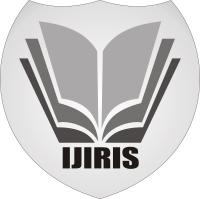Artikel,
INVESTIGATING ACHIEVEMENT OF CONTINUOUS ASSESSMENT TECHNIQUES ON STUDENTS’ DISCOVERY IN MATHEMATICS PERFORMANCE AT SSSI LEVEL AT GDSS BWARI, BWARI AREA COUNCIL, ABUJA, FCT
IJIRIS:: International Journal of Innovative Research in Information Security, Volume V (Issue VI): 36-42 (August 2018)1. Airasian, P. W. (1991). Classroom assessment. New York: McGraw-Hill. 2. Alausa, Y. A. (2004). Continuous assessment in our schools: advantages and problems. Namibia: Kolin Foundation Arandis. 3. Abejehu, S.B. (2016). The practice of continuous assessment in primary schools: The case of Chagni, Ethiopia. Journal of Education and Practice, 7(13). 4. Baker, E. L. (2010). What probably works in alternative assessment. (CRESST Report 772). Los Angeles, CA: University of California, National Center for Research on Evaluation, Standards, and Student Testing (CRESST). Reprinted from paper originally presented at the Annual Meeting of the American Educational Research Association, Chicago, IL, April, 1991. 5. Baker, E. L., & Stites, R. (1991). Trends in testing in the USA.Politics of Education Association yearbook. London: Taylor & Francis. 6. Bayo, C.O (2005). The basic of research methodology. Lagos: Kotleb Publishers. 7. Falayajo, W. (1986), Philosophy and theory of continuous assessment. Paper presented at a work shop for inspectors of Education in Odor State, Nigeria. 8. Fraenkel, J. R., &Wallen, N. E. (1993). How to design and evaluate research in education. New York: McGraw-Hill. 9. Frederickson, N. (1992). Curriculum-based assessment: broadening the base. In Cline, T. (ed.) The assessment of special educational needs: International perspectives (pp. 147-169). London: Routledge. 10. Gay. L. R. (1962). Educational Research. Islamabad: National Book Foundation. 11. Gipps, C. (1990). Assessment- A teacher’s guide to the teachers. London: Hodder and Stonhton. 12. Goldring E & Berends M. (2009). Leading with Data: Pathways to Improve Your School. Thousand Oaks, CA: Corwin 13. Iqbal M, Samiullah, and Aysha A (2017)Bulletin of Education and Research April 2017, Vol. 39, No. 1 pp. 91-100 14. Inyan-Abia, M.E. (2004). Social studis technologies, method and media. Port Harcourt: Doubl Diamond Publications. 15. Lewis, A. C. (1997). Changing assessment, changing curriculum. Education Digest. 12-17. Mariappan Jawaharlal on Twitter: www.twitter.com/jawa13 16. Nitko, A. J. (2004). Educational assessments of students. Englewood Cliffs, NJ: Prentice Hall. 17. Nxumalo, Z.F. (2007). The role of continuous assessment in primary school (M.Ed. Dissertation). Retrieved from http://uzspace.uzulu.ac.za/bitstream/handle/10530/531 18. Paris, S. G., Wasik, B. A., & Turner, J. C. (1991).The development of strategic readers. In R. Barr, M. L. Kamil, P. B. Mosenthal & P. D. Pearson (eds.), Handbook of Reading Research (vol. 2). New York: Longman, 609-640. 19. Prouty, J. D & George. E. S. (2003). Continuous assessment: A practical guide for teachers. American Institute for Research. 20. Prouty, J. D & George. E. S. (2003). Continuous assessment: A practical guide for teachers. American Institute for Research. 21. Watkins, A. (ed.) (2007). Assessment in inclusive settings: key issues for policy and practice. Odense, Denmark: European Agency for Development in Special Needs Education..
DOI: doi://10.26562/IJIRIS.2018.AUIS10080
Zusammenfassung
The efficiency of Continuous Assessment in guided discovery can be judged through periodic observation and collection of information from specific tasks assigned to students during their discovery learning process. The current research is aimed at exploring outcomes of continuous assessment that enhance the academic achievement of SSSI students. Sixty one (61) students were sampled out from SSSI in a co-educational school – Government Day Secondary School (GDSS), Dutse Alhaji, Bwari Area Council of FCT, Abuja -- for the experiment. They were all involved in the study of Pure Mathematics as a compulsory subject. Post-test design of control and experimental groups was adopted. An achievement test was used to collect the information from respondents. Independent sample t-test was also applied as test of significance. It was concluded that continuous assessment had positive effects on students’ achievement in discovery learning. It was recommended that teachers who are well versed in evaluation and assessment techniques should be encouraged and their expertise utilized to enhance students’ performance at the SSSI level. In addition, training should be given to the instructors.
